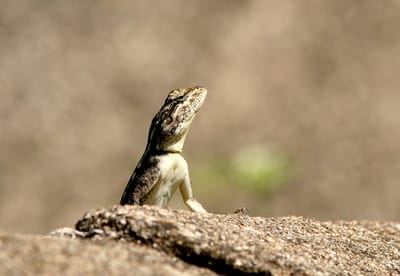As you walk about in Bengaluru, you might often pass several reptiles without seeing them. Though it is not common to see snakes, they are sometimes sighted, and strike terror into our hearts usually, even if they are non-poisonous.

Pic: Deepa mohan
But apart from the snakes, lizards are a kind of reptile that we see very often, and which are very helpful in keeping the insect population down. The House Gecko or the lizard in the house, that we don’t like to see at all, actually eats cockroaches and other insects. Some of the other reptiles we see are the Garden Lizard and the Chameleon that changes colours is quite a sight.
All lizards are cold-blooded and need to sun themselves regularly to keep their body temperature up. Some of them, like the House Gecko, can detach their tails to run away from predators. Lizards also have pads on their feet that help them adhere to even difficult surfaces; that’s why we often see lizards on walls and ceilings.
One of the lizards we see often, out in the open areas, is the Peninsular Rock Agama, pictured above.
The male Agama develops a bright colouring during the breeding season, so that it is easily visible to the more dull-coloured female. However, the minus of this is that it is also more visible to birds and other animals that might prey on it. Agamas, too, normally scuttle away as soon as we approach them….and very often, they are so camouflaged on the rocks that one can easily miss them.
So the next time you pass a patch of mud or a large rock, look carefully…and you might see a fellow-resident of this city, looking back at you with an unwinking stare.⊕
I find that knowing more about the creatures around us lessens the irrational fears we often have about them.